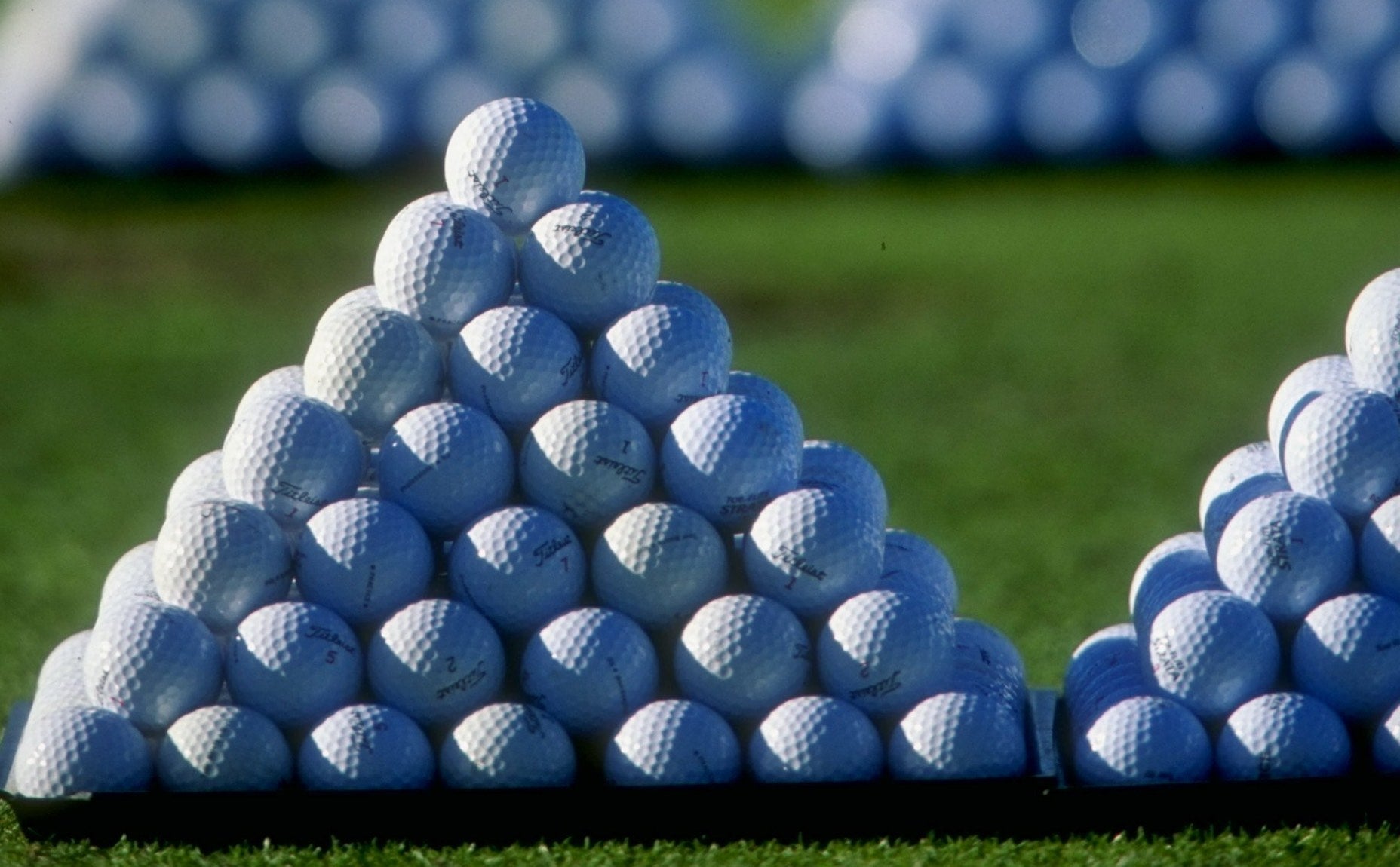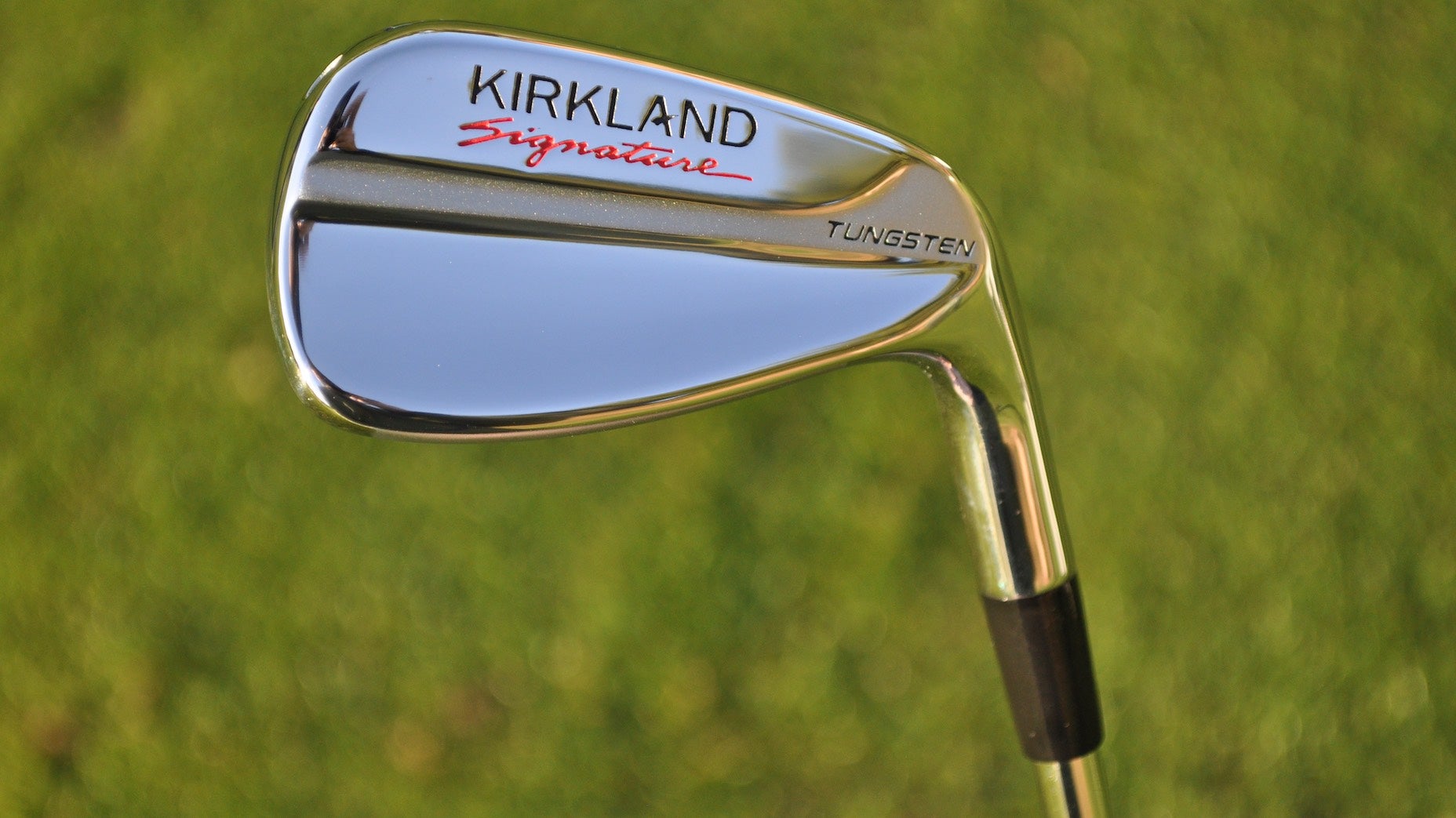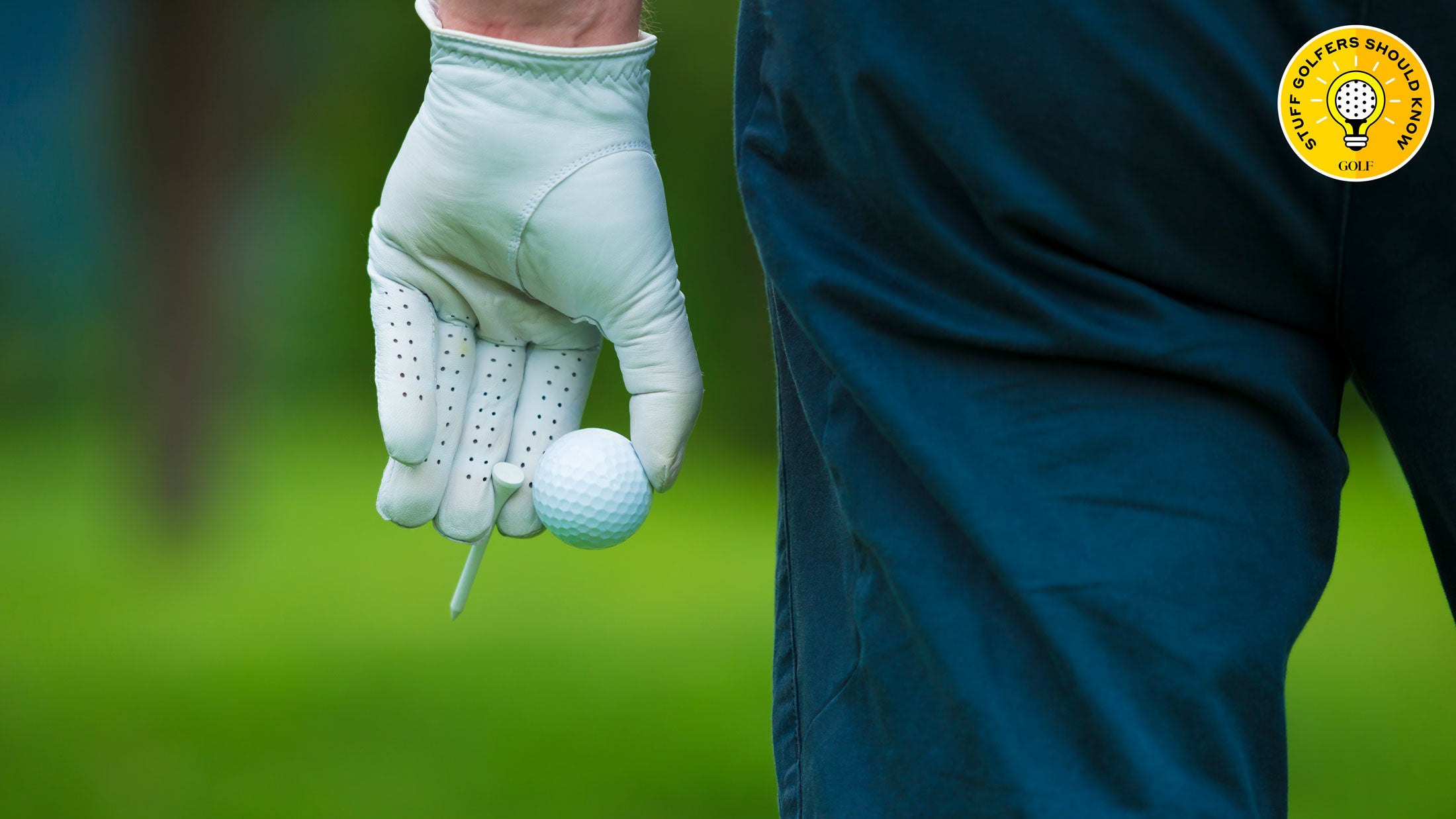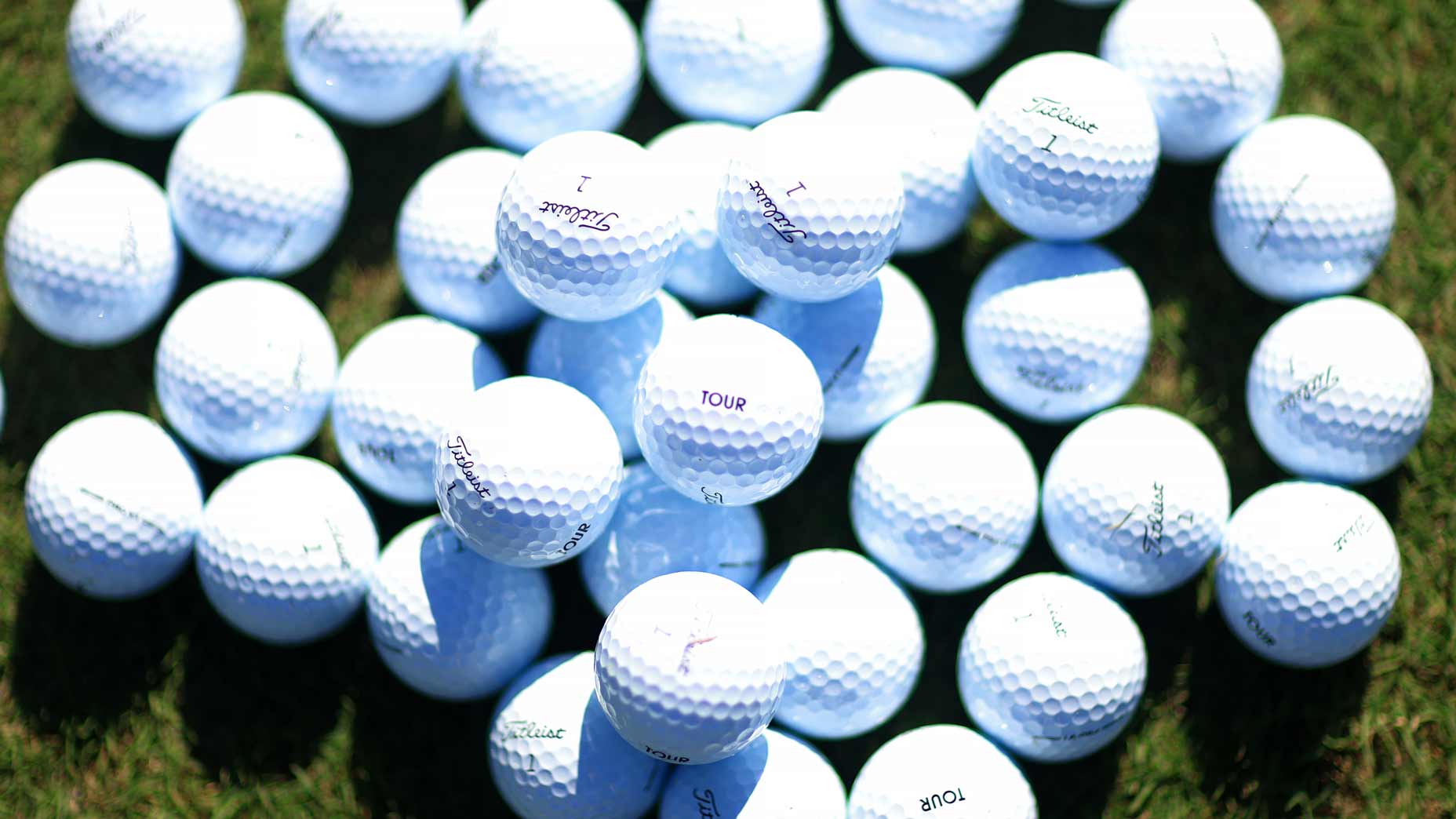What would happen if golf returned to balata balls? We found out

Before the modern solid-core construction balls took over the industry in the early 2000s, liquid-filled balatas ruled the sport.
Getty Images
Earlier this week, I had the opportunity to chat with Thomas Pagel, the USGA’s Chief Governance Officer, about the impending golf ball rollback the governing bodies are asking golfers of all skill levels to embrace in 2028 (for professionals) and 2030 (for amateurs). Pagel had plenty to say on why the ball needs to be dialed back, but there was little in the way of detail on exactly how they expect manufacturers to produce a ball that limits distance for golfers at different speeds.
One thing he did try to hammer home was the fact that the USGA and R&A had no interest in rolling the ball back to the days of liquid-filled balata balls — one of the last major innovations in ball technology before solid-core, multi-layer construction took over the industry.
“This is not about taking the game back 20 years, 30 years as it relates to ball technology,” Pagel said. “Even under these rules, manufacturers will be able to produce modern golf balls that look and feel the same. We say five or less yards on your driver, that’s a big range. But that’s a big range because it’s player-dependent, it’s swing-dependent. Frankly, it’s going to be equipment dependent.
“Yes, there’ll be an impact. We don’t want to downplay that. People are going to feel challenged, feel it. There’s going to be an impact. But the reality is we’re confident in our estimates that this will have a minimal impact to the recreational game and for the recreational game.”
As GOLF.com colleague Ryan Barath wrote in a recent piece, there are three obvious ways R&D departments could go about creating a ball that conforms to the new testing conditions. But what would happen if everyone was required to go back to playing a balata with modern-day equipment?
To highlight how far golf-ball technology has come, GOLF.com linked up with Golf Laboratories to conduct a test pitting the modern-day ball against a liquid-filled balata to highlight the difference in launch, spin and speed.
As you’ll notice in the results below, some of the deltas were staggering.
To conduct the test, Golf Laboratories obtained sealed boxes of the same wound, liquid-filled Tour-level balata ball from the 1990s to compare against a popular multi-layer, solid-construction, urethane ball. All product was hit at varying speeds with the same modern-day equipment delivered at the same impact positions. (Note: the balata balls were in a sealed box, but a 1-2% decrease in distance is possible due to their age.)
Here are the results:
Modern Urethane vs. Tour-level Batala Driver Test
1. Amateur Driver Speed (92 mph)
RESULTS:
Modern urethane ball: 232.4 yds at 2,768.8 RPMs
Tour-level balata ball: 210.2 yds at 3,346.8 RPMs
Difference: -22.2 yards | +578 RPMs | Ball speed decreased by 4.5 mph
***
2. Tour Driver Mid (103 mph)

RESULTS:
Tour-level balata ball: 265.8 yds at 3,343.8 RPMs
Modern urethane ball: 288.3 yds at 2,382.2 RPMs
Difference: -22.5 yards | +961.6 RPMs | -4.3 mph
***
3. Tour Driver Mid-High (113 mph)
RESULTS:
Modern urethane ball: 294.9 yds at 2,822.2 RPMs
Tour-level balata ball: 262.5 yds at 3,785.8 RPMs
Difference: -32.4 yards | +963.6 RPMs | -4.2 mph
***
4. Tour Driver High (132 mph)
RESULTS:
Modern urethane ball: 356.9 yds at 2,631 RPMs
Tour-level balata ball: 324 yds at 3,472 RPMs
Difference: -32.9 yards | +841 RPMs | -6 mph
***
Modern Urethane vs. Tour-level Batala Iron Test
5. Tour 6-iron (91 mph)
RESULTS:
Modern urethane ball: 197.3 yds at 5,687 RPMs
Tour-level balata ball: 186.5 yds at 6,458 RPMs
Difference: -10.8 yards | +771 RPMs | -3.6 mph
***
Modern Urethane vs. Tour-level Batala Wedge Test
6. Tour 56-degree wedge (83 mph)
RESULTS:
Modern urethane ball: 91.1 yds at 9,860.6 RPM
Tour-level balata ball: 86.5 yds at 11,861.7 RPM
Difference: 4.7 yards and 2001.1 RPMs
***
10 takeaways from our testing:
Parente’s testing revealed several interesting findings, with regard to launch and spin:
1. The Tour-level balata generated a higher spin rate than the modern-day ball with all types of swings.
2. The Tour-level balata produced a lower launch and ball speed than the modern ball.
3. The greatest distance loss was at the 132 mph driver speed with a mid spin rate.
4. A Tour driver speed with low spin produced the smallest distance delta (20.4 yards).
5. If ball spin is utilized to limit distance, this could potentially affect players with different swing styles in different ways. Players with lower spinning shots — for example, an “inside/out” path below 2,400 RPMs spin — will be less affected than a player who plays a power fade — slightly “outside/in” path at 2,600-2,800 RPMs spin — with the same clubhead speed. A universal ball would provide different results based upon its design parameters.
6. If you were to combine the modern-day Tour driver with a Tour-level balata at mid or mid-high spin, a distance loss of 40-plus yards is possible.
7. Wedge spin is approximately 2,000 RPMs higher on the Tour-level balata versus the modern-day solid-construction.
8. Driver distance loss varies based upon launch conditions.
9. 6-iron distance loss is roughly one club shorter when comparing the two balls.
10. An increase in wedge spin would cause some players to adjust their swing to adapt to excessive spin produced with the Tour-level balata and modern-day wedge.
Want to overhaul your bag for 2024? Find a fitting location near you at True Spec Golf.










